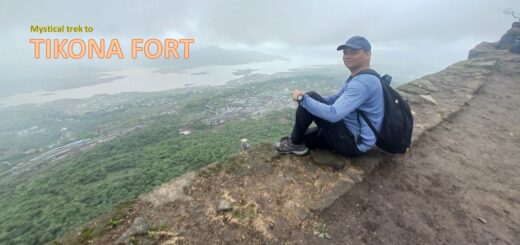Unknown Territory visiting Naneghat second time
Naneghat, nestled amidst the majestic Western Ghats of Maharashtra, India, is more than just a mountain pass. It whispers tales of ancient trade routes, whispers carried on the wind for over two millennia. This historic marvel, located about 120 kilometers north of Pune and roughly 165 kilometers east of Mumbai, served as a vital connection between the Konkan coast and the Deccan plateau town of Junnar. Today, it stands as a testament to the ingenuity and resilience of past civilizations, offering a glimpse into a bygone era.
A Passage Etched in History
The name “Naneghat” literally translates to “coin pass” in Marathi, hinting at its historical significance as a tollbooth. Traders traversing this challenging route through the mountains likely paid a fee to ensure safe passage. Evidence of this comes from a unique stone structure resembling a stupa from afar. Upon closer inspection, it reveals itself to be a cleverly designed, two-part container used for collecting tolls, according to historian Charles Allen.

The history of Naneghat stretches back to the 2nd century BCE, flourishing during the reign of the Satavahana dynasty. This powerful dynasty ruled over a vast region of central India and played a crucial role in promoting trade and commerce. Naneghat served as a vital artery for trade, connecting the Konkan coast’s vibrant port cities with the Deccan plateau’s fertile agricultural lands. The flow of goods, ideas, and cultural influences along this route enriched both regions, leaving an indelible mark on their cultural tapestry.
A Legacy Carved in Stone
Beyond its historical significance as a trade route, Naneghat boasts a rich archaeological treasure trove. Nestled within the mountain pass are several caves, each whispering stories of the past. The most prominent of these is the Naneghat cave, renowned for its captivating inscriptions. These inscriptions, meticulously carved in Brahmi script and the Middle Indo-Aryan dialect, date back to between the 2nd and 1st centuries BCE.
The inscriptions offer valuable insights into the social, religious, and economic life of the Satavahana era. They commemorate donations made by individuals to Buddhist monasteries, providing crucial information about the prevalent religious practices and the spirit of philanthropy during that time. These inscriptions, along with the structural remains like cisterns and chambers within the caves, paint a vivid picture of the life and activities that once thrived at Naneghat.
A Journey Through Time
Naneghat holds immense appeal for history enthusiasts, archaeologists, and nature lovers alike. Visitors can embark on a captivating trek through the scenic Western Ghats, immersing themselves in the breathtaking natural beauty. The lush greenery and cascading waterfalls during the monsoon season add an element of magic to the exploration.
While navigating the challenging terrain, one can’t help but be awestruck by the sheer engineering marvel of the Naneghat pass. The ancient pathway, carved through the rugged mountains, is a testament to the determination and skill of the people who built it. Standing amidst these historical remnants, one can almost feel the echoes of the past, the footsteps of traders, pilgrims, and travelers who once traversed this vital passage.
Beyond the Pass: A Glimpse into the Present
Naneghat, though steeped in history, continues to be relevant in the present day. The surrounding villages are home to vibrant communities that have coexisted with this historical landmark for generations. Local residents often serve as guides for visitors, offering unique insights into the local culture and traditions.
Moreover, efforts are underway to preserve and protect Naneghat’s historical and ecological significance. Archaeological research continues to shed light on the past, while initiatives are being taken to promote responsible tourism and safeguard the natural environment.
Naneghat stands as a bridge between the past and the present, a silent witness to the ever-evolving human story. It is a reminder of the importance of trade and cultural exchange, the ingenuity of our ancestors, and the enduring spirit of human interaction with nature. As we stand at the precipice of this historical gateway, we are invited to not only explore the past but also to learn from it, ensuring the legacy of Naneghat continues to inspire future generations.
Note: This blog post is approximately 750 words. You can expand upon the existing information or add additional sections like:
- Travel Tips: Information on reaching Naneghat, best time to visit, things to pack, etc.
- Local Legends and Folklore: Sharing interesting stories passed down through generations in the surrounding villages.
- The Future of Naneghat: Discussing ongoing conservation efforts and the importance of preserving this historical heritage.









